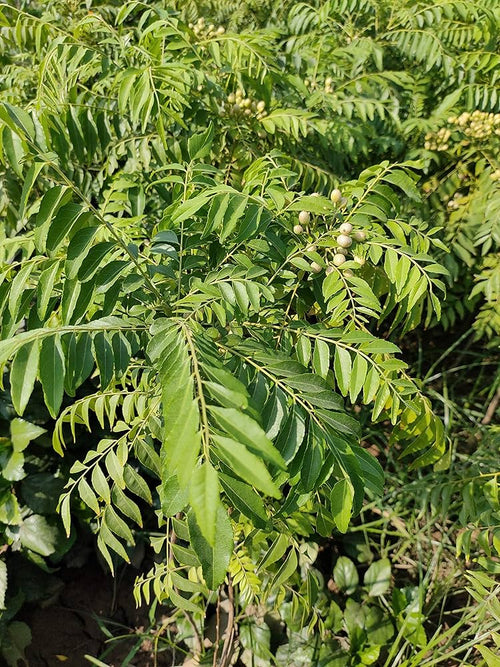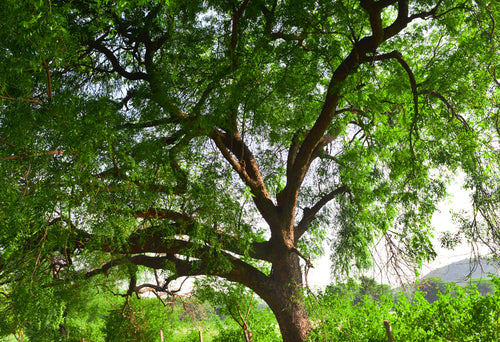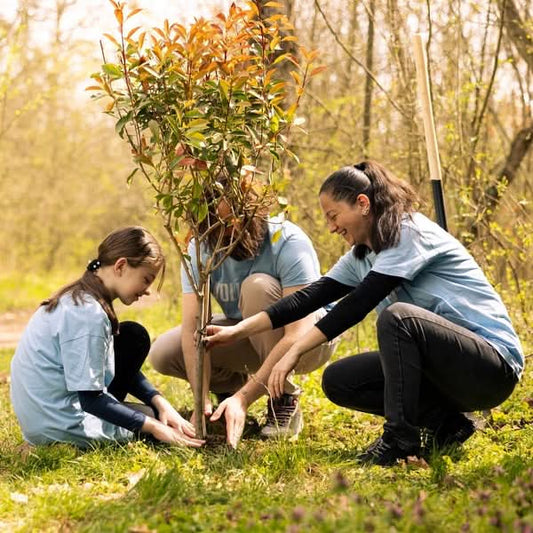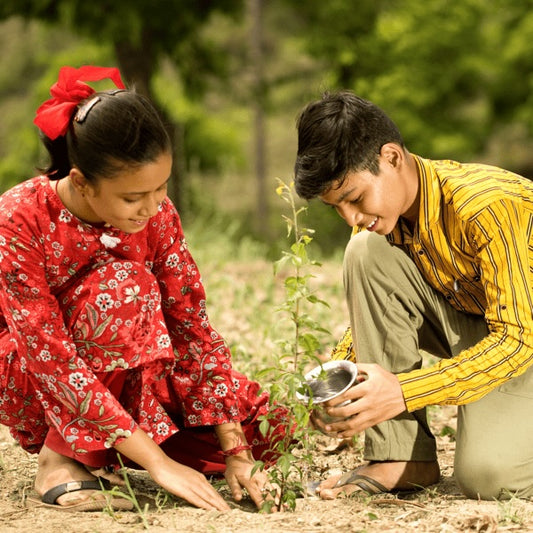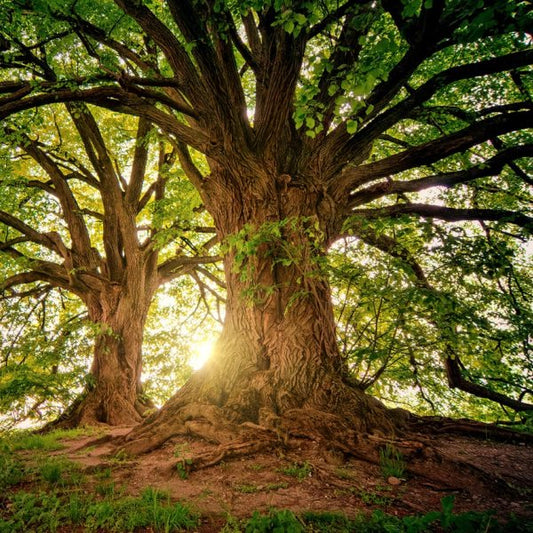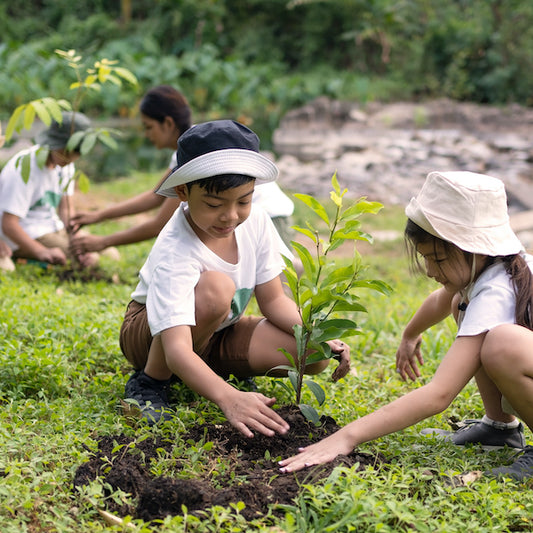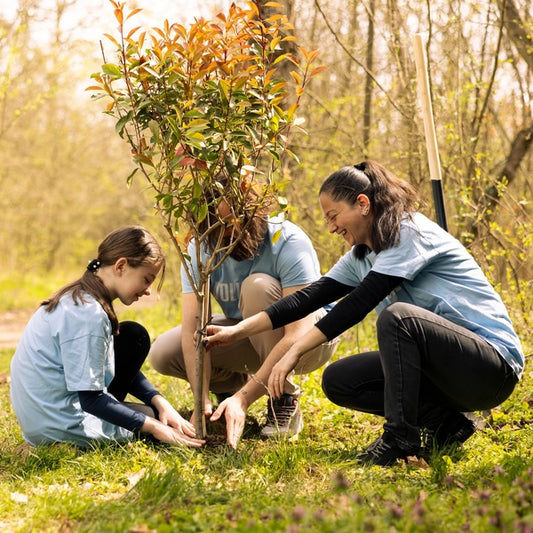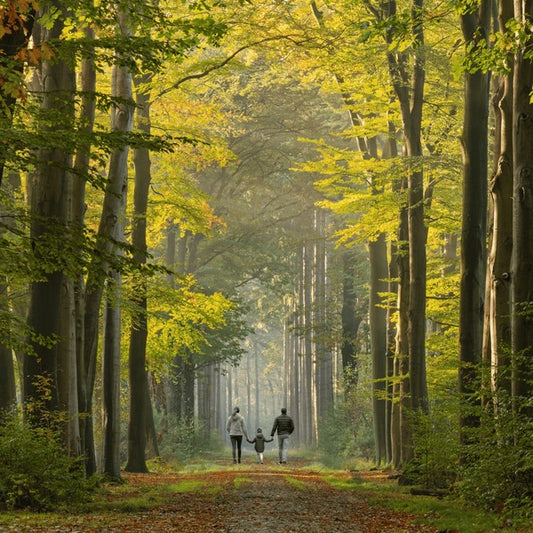"Valmont Structures: Cultivating Sustainability through Employee Engagement in Urban Fores
Valmont Structures organized a tree plantation initiative aimed at fostering sustainability and employee engagement through the creation of urban fore Read more
Project Update 2
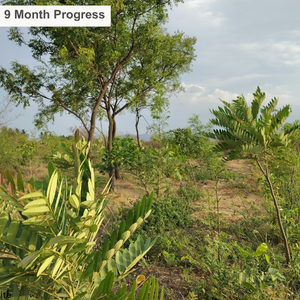
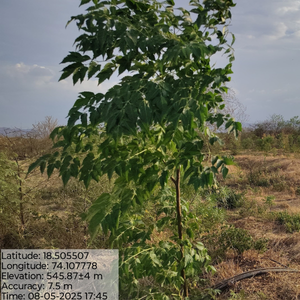

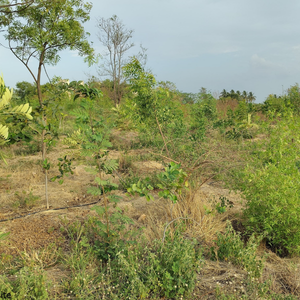
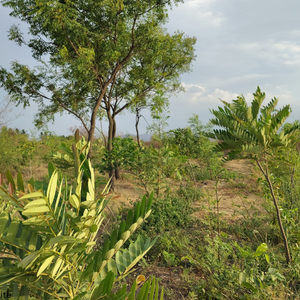
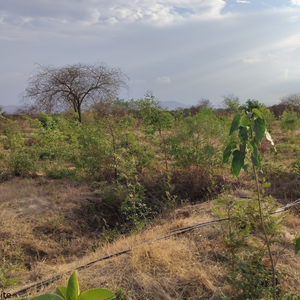
Project Update 1

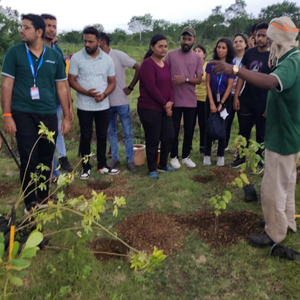
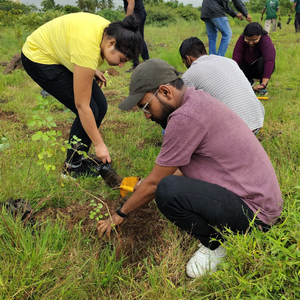
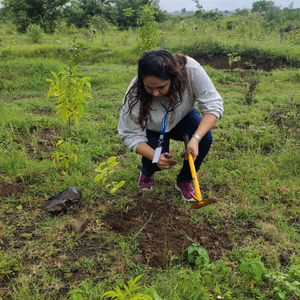
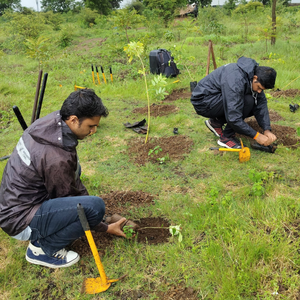
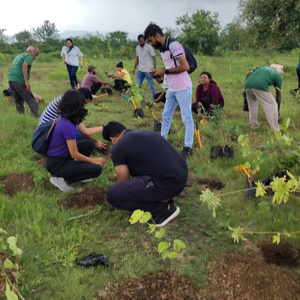
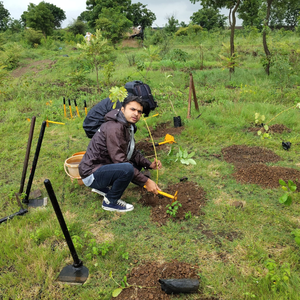
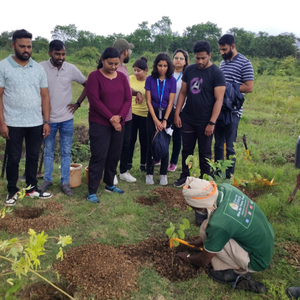
Digital Forest
Forest with 100 Trees planned
Want to plant your tree now?
Plant a Tree @ 299"Valmont Structures: Cultivating Sustainability through Employee Engagement in Urban Forests"
Valmont Structures organized a tree plantation initiative aimed at fostering sustainability and employee engagement through the creation of urban forests. The program encourages employees to actively participate in planting and nurturing trees, contributing to greener communities while promoting environmental responsibility. This initiative reflects Valmont’s commitment to creating eco-friendly spaces and enhancing team collaboration through hands-on involvement in reforestation efforts.
Through this initiative, Valmont exemplifies its dedication to creating a sustainable future. By partnering with GBT and involving employees in hands-on environmental activities, the company has made tangible strides in restoring urban ecosystems, promoting sustainability, and inspiring others to take collective action for a greener planet. This initiative serves as a powerful testament to Valmont’s long-term vision of building healthier, greener communities for generations to come.
Project Planning & Execution
No. of trees: 100 Trees
Plantation Location: Prayagdham Plantation Site, Koregaon Mul, Pune, Maharashtra 412202
Plantation Date: 9th August 2024
Name of Species: Neem, Bargad, Saptparni, Behada, Amltash, Laxmi tare, Karanj, Anjan, Khirni
Species Selection & Its Benefits:
The species selected for Valmont Structures' urban forestry initiative were carefully chosen to align with the local ecosystem and maximize ecological benefits. The focus was on planting a mix of native, shade-providing, and fruit-bearing species, including Neem, Banyan, Saptparni, Behada, Amaltash, Laxmi Tare, Karanj, Anjan, and Khirni, offering a wide range of environmental, medicinal, and ecological benefits.
Neem is known for its strong antibacterial and air-purifying properties, while Banyan provides shade and supports biodiversity with its vast canopy. Saptparni helps improve air quality and is used in treating respiratory ailments. Behada, a key ingredient in Ayurvedic Triphala, aids digestion and promotes overall health. Amaltash enhances the landscape with its vibrant yellow flowers and supports pollinators like bees.
Laxmi Tare, often used for soil enrichment, also has medicinal value. Karanj contributes to soil health through nitrogen fixation and offers biofuel potential. Anjan thrives in dry conditions, helping with afforestation and erosion control, and Khirni provides nutrient-rich fruits and habitats for birds. Together, these trees promote ecological balance, support local wildlife, contribute to sustainable environmental practices, support biodiversity, offer habitats for wildlife, and contribute to the sustainability of urban environments.
These species were chosen not only for their environmental benefits, such as improving air quality, preventing soil erosion, and enhancing water retention, but also for their ability to provide shade, reduce urban heat, and offer food sources for local communities. This thoughtful selection ensures that the trees serve both ecological and social purposes, creating a lasting positive impact on the urban landscape.
Beneficiaries Details
-
Target Population: Employees, stakeholders, and local community members of Pune
-
Age Group: All age groups focus on adults to seniors
-
Gender: Inclusive of all genders
-
Social & Economic Status: Open to all social and economic backgrounds, emphasizing community involvement
Planting Methodology and Its Advantages
Urban Forest: An urban forest is a network of trees, shrubs, and vegetation strategically planted in urban areas to enhance biodiversity, improve air quality, reduce the urban heat island effect, and provide green spaces for community well-being. It helps mitigate climate change by absorbing carbon dioxide, promotes mental health through accessible green areas, and supports local wildlife by creating habitats. Urban forests play a vital role in building resilient, sustainable cities that benefit both the environment and the people who live in them.
Advantages of Urban Forest
-
Climate Regulation and Cooling Effect: Urban forests help mitigate the urban heat island effect by providing shade and cooling through transpiration, lowering temperatures in cities, reducing the need for air conditioning, and conserving energy.
-
Improved Air Quality: Trees absorb pollutants like carbon dioxide, nitrogen oxides, and particulate matter, leading to improved air quality and reducing the risk of respiratory illnesses in urban areas.
-
Stormwater Management and Flood Prevention: Urban forests improve the soil’s ability to absorb and retain water, reducing stormwater runoff, preventing flooding, and promoting groundwater recharge, thus helping manage water resources efficiently.
-
Soil Erosion Control: The deep root systems of trees prevent soil erosion, especially in areas with heavy rainfall or steep slopes, stabilizing the land and reducing soil loss in urban environments.
-
Aesthetic and Recreational Value: The transformation of unused spaces into green zones adds aesthetic value to the area and provides employees and local communities with recreational spaces, making the workplace more enjoyable.
-
Enhanced Community Engagement and Well-being: Urban forests provide accessible green spaces where communities can engage in recreational activities, improving mental health, reducing stress, and fostering a sense of environmental stewardship among residents and employees.
-
Increased Property Value: Properties located near urban forests or green spaces tend to have higher market values, benefiting local property owners and increasing the overall appeal and livability of the area.
- Noise Reduction: Urban forests act as natural sound barriers, reducing noise pollution and creating quieter, more peaceful surroundings.
Activities During Tree Plantation
The tree plantation drive at Prayagdham Plantation Site, Koregaon Mul, Pune, Maharashtra 412202 was marked by Valmont Structure’s commitment to Corporate Social Responsibility (CSR) and employee engagement. A tree plantation event was organized to promote environmental sustainability and team involvement.
Employees from various departments actively participated in planting native tree species, fostering a sense of unity and shared purpose. The initiative not only supported Valmont’s green goals but also provided a meaningful opportunity for employees to contribute to ecological well-being. By combining CSR with hands-on participation, the event reflected Valmont Structure’s dedication to building a sustainable future while strengthening employee connection and organizational values.
The plantation drive concluded with a reflection session, allowing participants to appreciate their contributions towards a greener environment. The initiative reinforced Valmont Structures' commitment to sustainability, employee engagement, and corporate environmental responsibility.
Conclusion Elements
Impact
Direct Impact
|
Parameters |
Values |
References |
|
No. of Trees Planted |
100 |
|
|
Green Cover (Acres) |
0.04 |
|
|
Carbon Sequestration Potential (KG) |
20 |
Small to medium-sized trees can sequester around 10–48 kilograms (22–106 pounds) of CO₂ annually. https://onetreeplanted.org/blogs/stories/how-much-co2-does-tree-absorb |
|
Carbon Sequestration by 187 mature trees ( Tons/year) |
2 Tons |
No. of Trees x Carbon Sequestration by 1 mature tree per year |
|
Carbon Credit Equivalent |
2 |
One carbon credit is equivalent to one tonne of carbon dioxide or the equivalent amount of another greenhouse gas. |
|
Carbon Footprint of an avg Indian Citizen (Tons/Year) |
1.8 |
|
|
Offsets Annual Carbon Footprint of (Adults) |
1 |
Carbon offset by 187 mature trees per year / Carbon Footprint of an avg Indian Citizen per year |
*This impact analysis is forward-looking (An urban-forest project matures in 3-5 years)
Indirect Impact
Community Impact
-
Improved Public Health: By improving air quality and reducing urban heat, the project indirectly contributes to better public health. The presence of green spaces encourages outdoor activities, which can reduce stress levels, promote mental well-being, and decrease the incidence of respiratory diseases.
-
Environmental Awareness: Involving communities in urban forestry raises awareness about environmental conservation and promotes sustainable practices in daily life.
-
Employee Morale: The initiative fostered a sense of pride and connection among employees, strengthening team bonds and their alignment with the company’s values.
-
Inspiration for Change: By showcasing the potential of urban forestry, the project has encouraged other organizations and local communities to undertake similar initiatives.
- Cultural Shift: The initiative instilled a mindset of sustainability and environmental care among participants, creating advocates for green practices in their personal and professional lives.
Environmental Impact
-
Carbon Sequestration: The trees planted through Valmont’s urban forestry initiative absorb carbon dioxide, acting as carbon sinks and helping mitigate climate change by reducing greenhouse gas emissions.
-
Soil Health Improvement: The tree planting initiative enhances soil health by enriching it with organic matter, improving soil fertility and structure, which supports the growth of surrounding vegetation.
-
Erosion Prevention: Tree roots help stabilize the soil in urban areas, preventing erosion caused by wind and water, while safeguarding nearby properties and infrastructure from potential damage.
-
Biodiversity Conservation: By creating green spaces, the initiative supports local biodiversity, providing habitats for various species, pollinators, and beneficial insects, and enhancing the ecological balance in urban areas.
-
Water Cycle Regulation: The urban forestry project helps regulate the water cycle by improving water retention in the soil, recharging groundwater levels, and reducing surface runoff, leading to a more balanced and sustainable urban environment.
-
Microclimate Regulation: Trees planted through this initiative moderate temperature extremes, reduce wind speeds, and increase humidity, creating a favourable microclimate for both the community and the urban ecosystem.
Achievements
SDG Goals Achieved through Urban Forest
-
SDG 3: Good Health and Well-Being – Valmont’s urban forestry project enhances air quality and creates green spaces that promote physical and mental well-being, reducing stress and fostering a healthier urban lifestyle.
-
SDG 5: Gender Equality – By encouraging inclusive participation in agroforestry, this initiative supports women’s involvement in sustainable farming and economic empowerment.
-
SDG 6: Clean Water and Sanitation – Trees play a crucial role in water conservation by enhancing groundwater recharge, reducing surface runoff, and improving overall water retention. Valmont’s initiative supports sustainable urban water systems through afforestation and green infrastructure.
-
SDG 7: Affordable and Clean Energy – By mitigating the urban heat island effect, Valmont’s tree plantation efforts help lower ambient temperatures and reduce reliance on artificial cooling. The shade provided by trees enhances energy efficiency and promotes a more sustainable urban climate.
-
SDG 8: Decent Work and Economic Growth – The initiative generates employment opportunities in tree planting, maintenance, and ecological restoration, contributing to local economic development and green job creation.
-
SDG 9: Industry, Innovation, and Infrastructure – Valmont integrates sustainable urban forestry into infrastructure planning, promoting green innovation and enhancing urban resilience.
-
SDG 10: Reduced Inequalities – The initiative ensures inclusivity by engaging employees from diverse backgrounds in environmental conservation. By creating accessible green spaces, Valmont promotes environmental equity and ensures that all communities, including marginalized groups, benefit from cleaner air, mental well-being, and recreational opportunities.
-
SDG 11: Sustainable Cities and Communities – Valmont’s commitment to urban afforestation contributes to creating more sustainable and resilient cities by increasing green cover, improving air quality, and enhancing urban biodiversity.
-
SDG 12: Responsible Consumption and Production – Valmont’s commitment to sustainability is reflected in its responsible approach to urban forestry, focusing on resource efficiency and long-term environmental benefits.
-
SDG 13: Climate Action – The plantation initiative actively supports climate action by sequestering carbon, reducing greenhouse gas emissions, and mitigating climate change effects through the expansion of green spaces.
-
SDG 15: Life on Land – By restoring green spaces with native and fruit-bearing trees, the initiative strengthens biodiversity, supports wildlife, and contributes to a thriving urban ecosystem.
-
SDG 16: Peace, Justice, and Strong Institutions – By fostering inclusive decision-making and community-led governance, Valmont strengthens local environmental stewardship, ensuring transparency and collaboration for sustainable urban development.
-
SDG 17: Partnerships for the Goals – The initiative thrives on collaboration with local communities, environmental organizations, and partners such as Grow Billion Trees. Valmont strengthens environmental partnerships to drive impactful urban sustainability and afforestation efforts.
ESG Achieved through Urban Forest:
-
Environmental Impact: Valmont’s urban forestry initiative significantly enhances environmental sustainability. By planting diverse tree species, the company boosts biodiversity, creates habitats for wildlife, and supports local ecosystems. The trees act as carbon sinks, reducing CO2 levels and mitigating climate change. Additionally, the initiative improves urban climate resilience by regulating temperatures, reducing the heat island effect, and enhancing water retention, ensuring long-term ecological health for future generations.
-
Social Impact: Valmont’s urban forestry initiative fosters community engagement and well-being by encouraging local participation in tree planting and environmental awareness. The green spaces created improve air quality, promote physical activity, and enhance public health. The project fosters women’s employment by involving them in various stages of plantation and maintenance, empowering them with sustainable livelihood opportunities. The project generates job opportunities in tree planting and maintenance while promoting social equity by ensuring access to green spaces for all, including marginalized groups. These efforts build a more inclusive, resilient, and sustainable community.
-
Governance Impact: Valmont demonstrates strong leadership and commitment to sustainability through its urban forestry initiative. The company ensures transparency and accountability by effectively communicating project plans and outcomes to stakeholders. By collaborating with environmental organizations and local communities, it amplifies the impact of its efforts. This approach aligns with best governance practices, achieving environmental and social goals while promoting long-term sustainable growth.
Building Communities
One of the most impactful outcomes of Valmont’s urban forestry initiative was the sense of unity and collaboration it cultivated. By involving employees, local communities, and volunteers, the project became a collective mission to create sustainable urban green spaces, fostering a shared commitment to a greener future.
-
Empowering Communities: Participants became active contributors, gaining knowledge about urban forestry practices and taking ownership of the initiative. This empowerment strengthened their connection to the environment and reinforced their role as environmental stewards.
-
Fostering Partnerships: The project brought together diverse stakeholders, including Valmont, Grow Billion Trees, and local communities, highlighting the value of collaboration in achieving environmental and social goals.
-
Creating a Ripple Effect: As communities experienced the benefits of urban forestry, their enthusiasm inspired others to adopt similar practices, amplifying the initiative's positive impact across the region.
This initiative demonstrates that environmental sustainability thrives when rooted in collective effort. It’s not just about planting trees—it’s about planting hope, collaboration, and a shared vision for a healthier and greener future.
Commitment by Grow Billion Trees
-
Ensuring Tree Survivability: GBT prioritizes native species, continuous monitoring, and soil health improvement using organic fertilizers. These efforts ensure sustainable growth and benefit communities.
-
Transparency & Accountability: GBT provides detailed reports on tree growth, survival rates, and carbon benefits, using geo-fencing and regular updates to maintain transparency and effectiveness.
-
Sustainable Plantation Efforts: GBT implements projects that balance environmental, social, and economic goals, addressing issues like urban heat islands and degraded farmlands. These efforts promote ecological balance, livelihoods, and long-term climate resilience.
-
Enhancing Ecosystem Health: By selecting native species and creating diverse habitats, GBT enhances biodiversity and ecosystem resilience, ensuring long-term ecological health and supporting wildlife.
-
Long-Term Impact: GBT’s initiatives tackle environmental challenges, foster climate resilience, and promote sustainable development while reducing carbon footprints.
Acknowledgment
We at Grow Billion Trees extend our heartfelt gratitude to all those who have contributed to the success of the urban forestry initiative across Pune. This project, which combines environmental sustainability with employee engagement, would not have been possible without the support and collaboration of our dedicated employees, local authorities, and partners. Their collective efforts in planting and nurturing over 100 trees are helping create a greener and more resilient future for urban communities. We are thankful for their commitment to fostering biodiversity, improving air quality, and promoting a sustainable future.
To Valmont Structures: We sincerely thank you for your dedication to sustainability and employee engagement. Your innovative approach to urban forestry has laid the foundation for a greener, more resilient future in Pune. Through your efforts, trees have been planted, fostering biodiversity, improving air quality, and creating lasting positive impacts on the environment. Together, we have created a legacy that will continue to benefit urban communities and contribute to a sustainable tomorrow.
To Our Ground Partners and Volunteers: Your expertise, dedication, and passion for environmental sustainability have been crucial to the success of Valmont’s urban forestry initiative. Through your collaborative efforts, we have made meaningful strides in creating greener urban spaces and promoting biodiversity across Pune. Your contributions have not only enhanced the environment but also fostered community engagement and awareness. Together, we are building a more sustainable future, and we look forward to continuing our partnership in creating a greener, healthier world for all.
Thank you for your unwavering support and commitment.
Closing Remarks
We are proud to have embarked on the Valmont Structure’s journey of environmental sustainability through its urban forestry initiative in Pune. This project has not only enhanced urban greenery but has also fostered a sense of community engagement and environmental stewardship. It highlights the power of collaboration, where every contribution, big or small, brings us closer to a healthier, more sustainable future.
As we look ahead to the continued success of this initiative, we are committed to expanding our efforts and inspiring others to join us in creating lasting positive change. Together, we are laying the foundation for a world where urban sustainability, community empowerment, and responsible practices thrive.
Thank you to everyone who has been part of this meaningful endeavour. Let’s continue working together to make a difference for today and future generations.
Trees for Corporates
Trending
Most Popular
1. Urban Reforestation
Urban reforestation is like giving nature a makeover, city-style! Instead of skyscrapers, think tree-toppers. Valmont's urban reforestation initiative is planting trees in the heart of cities, proving that even the concrete jungle deserves some greenery. It’s about more than just aesthetics—urban reforestation helps battle pollution, creates cooling zones, and invites biodiversity back into urban spaces. Imagine commuting alongside birds instead of honking horns! By rallying employees to plant trees, Valmont is not just building structures but also a sustainable future. Who knew planting trees could be the coolest urban trend? It's a green revolution where skyscrapers and forests coexist, and you get to breathe easier.
2. Employee Green Engagement
Employee engagement has gone green—literally! Valmont’s urban forest initiative turns the typical office team-building exercise into a tree-planting extravaganza. Forget ropes courses and awkward icebreakers; this is about getting your hands dirty, quite literally, while saving the planet. Employees team up, shovel in hand, to plant trees, nurture the environment, and share some outdoor bonding. It’s corporate responsibility with a twist of eco-fun. Plus, who wouldn’t want to say their nine-to-five contributed to cleaner air and happier bees? With Employee Green Engagement, it’s more than just work—it’s work with nature!
3. Corporate Social Responsibility (CSR)
Corporate Social Responsibility (CSR) just got a green upgrade—cue the trees! Valmont’s tree plantation initiative takes CSR to new heights by creating urban forests. It’s like giving back to the community but in leafy form. Forget just cutting checks; Valmont employees are planting roots—literally! By focusing on urban reforestation, Valmont proves that sustainability isn't just a buzzword; it’s a mission. Every tree planted is a symbol of Valmont’s commitment to a greener tomorrow, and it’s hard to beat that in the CSR world. It’s a forest-sized responsibility that grows bigger with each tree.
4. Sustainable Employee Initiatives
Sustainable employee initiatives are the new "perks" of the corporate world. Forget free coffee or ping pong tables—how about a tree? Valmont’s tree plantation initiative gives employees the chance to contribute to something meaningful by creating urban forests. It’s sustainability with a personal touch, where everyone pitches in to plant trees and help the planet breathe a little easier. Who knew going green could feel this good? It’s the ultimate team-building activity, where you leave the office not just with a paycheck but with the knowledge that you’ve contributed to a cleaner, greener world.
5. Urban Forest Ecosystem
The urban forest ecosystem is the cool cousin of the traditional forest, hanging out in the middle of the city. Valmont’s urban forests are bringing nature back to the concrete jungle, creating mini-ecosystems that thrive amid skyscrapers and busy streets. These ecosystems aren’t just tree-filled parks—they’re habitats for birds, insects, and other wildlife, turning urban areas into nature reserves. It’s nature’s way of saying, “I can hang in the city too!” Valmont’s employees are at the heart of it, planting the seeds (literally) of these ecosystems. It’s a biodiversity win that proves even cities can go green in style.
6. Carbon Footprint Reduction Initiatives
Who knew trees could be the ultimate “carbon diet”? Valmont’s carbon footprint reduction initiatives are all about slimming down those emissions with the help of trees. By planting urban forests, Valmont is offsetting carbon, one sapling at a time. Employees get involved, too, making sustainability more than just a corporate pledge—it’s a team effort. Each tree acts like a little carbon vacuum, sucking up pollution and spitting out fresh air. It’s like Mother Nature’s version of going to the gym, and Valmont is leading the charge in making sure the planet stays fit and healthy.
7. Green Spaces in Urban Areas
Green spaces in urban areas are like oases in a concrete desert, and Valmont is planting more of them. These urban forests are turning once-gray cityscapes into lush, green havens where people can breathe fresh air, relax, and connect with nature. Valmont’s tree plantation initiative is making cities cooler—literally and figuratively—by adding green spaces that reduce heat and create more pleasant environments. Who says you can’t have a forest in the middle of a metropolis? It’s the urban makeover everyone’s been waiting for, and Valmont is making sure there’s plenty of shade along the way.
8. Biodiversity in Cities
Biodiversity in cities is the next big thing, thanks to Valmont’s urban forest initiative. Think of it as bringing the wilderness back into the urban sprawl. By planting trees, Valmont is not only creating green spaces but also encouraging wildlife to make a comeback. Birds, insects, and even small mammals find new homes in these urban forests, proving that cities can be as vibrant and alive as rural environments. It’s like a wildlife reality show, with new contestants arriving daily! Valmont’s employees are the producers, planting trees that set the stage for this natural resurgence. Let the biodiversity boom begin!
FAQ
What is Valmont's tree plantation initiative about?
Valmont's tree plantation initiative focuses on creating urban forests that enhance sustainability and environmental health. We actively engage our employees in planting and maintaining trees, aiming to improve air quality, promote biodiversity, and create green spaces in urban areas. This initiative reflects our commitment to corporate social responsibility and fosters a culture of environmental stewardship within our organization.
What are the benefits of urban forests?
Urban forests provide numerous benefits, including improved air quality, reduced urban heat, and enhanced biodiversity. They create green spaces that promote mental well-being and offer habitats for wildlife. Additionally, urban forests help manage stormwater, reduce flooding risks, and mitigate climate change effects, making cities more resilient and livable.
How can employees participate in the tree plantation initiative?
Employees can participate in our tree plantation initiative by volunteering for planting events and maintenance activities. We organize regular team-building activities where employees come together to plant trees in designated urban areas. This hands-on involvement not only contributes to sustainability efforts but also fosters camaraderie and teamwork among staff.
What types of trees are planted in urban forests?
We focus on planting native and climate-resilient tree species that thrive in urban environments. These trees are selected for their ability to improve air quality, support local wildlife, and withstand the challenges of city living. By prioritizing biodiversity, our initiative contributes to healthier ecosystems within urban settings.
How does Valmont measure the success of its tree plantation initiative?
Valmont measures the success of its tree plantation initiative through various metrics, including the number of trees planted, survival rates, and community engagement levels. We also assess environmental impacts, such as improved air quality and increased biodiversity. Regular monitoring and evaluation help us refine our strategies for better outcomes.
Are there community events associated with the initiative?
Yes, Valmont organizes community events in conjunction with our tree plantation initiative. These events aim to raise awareness about the importance of urban forests and engage local communities in environmental conservation efforts. We invite residents, schools, and local organizations to participate in planting and educational activities.
What is the role of urban forests in climate change mitigation?
Urban forests play a vital role in climate change mitigation by sequestering carbon dioxide and improving air quality. They help regulate temperatures in urban areas, reducing the heat island effect. By increasing green cover, urban forests contribute to resilience against extreme weather events and enhance the overall sustainability of cities.
How does Valmont ensure the long-term maintenance of planted trees?
Valmont is committed to the long-term maintenance of planted trees through regular monitoring and care. We implement maintenance plans that include watering, pruning, and protection measures to ensure tree health and growth. Our employees and community volunteers are involved in ongoing maintenance activities, fostering a sense of responsibility.
What are the environmental impacts of Valmont's tree plantation initiative?
Valmont's tree plantation initiative positively impacts the environment by enhancing urban biodiversity, improving air quality, and reducing noise pollution. The trees planted help combat climate change by absorbing carbon dioxide and providing shade, which lowers urban temperatures. Overall, our initiative contributes to healthier, more sustainable urban environments.
How does Valmont's tree plantation initiative align with its corporate values?
Valmont's tree plantation initiative aligns with our corporate values by emphasizing sustainability, community engagement, and environmental stewardship. We believe in creating a positive impact on the environment while fostering a culture of responsibility among employees. This initiative is a tangible reflection of our commitment to sustainable development and corporate social responsibility.
- Choosing a selection results in a full page refresh.
- Opens in a new window.



